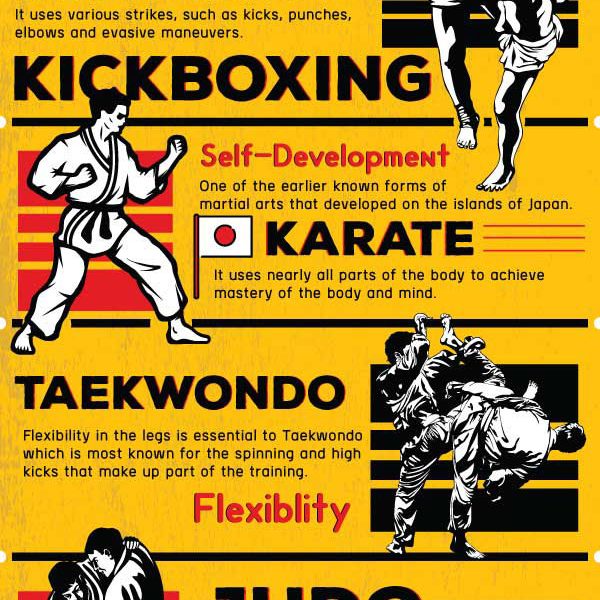Exploring The Rich Heritage And Spiritual Dimensions Of Martial Arts
Exploring The Rich Heritage And Spiritual Dimensions Of Martial Arts
Blog Article
Writer-Fyhn Friedman
Step into the ancient globe where martial arts were substantiated of necessity in varied areas. Societies crafted one-of-a-kind battling styles linked with historic contexts. Techniques evolved over centuries via committed practice and social exchanges. Today, modern martial arts blend typical aspects for optimal effectiveness. Philosophically, martial arts stress self-control, self-improvement, and consistency. Respect, humbleness, and balance are fundamental principles guiding professionals in the direction of development and durability. Check out the midsts of this rich history and approach to reveal the extensive influences shaping this long-lasting technique.
Beginnings of Fighting Style
Fighting style came from different regions around the world, developing as practical battle systems to prevent threats. These old battling designs were created out of need, with each culture crafting strategies fit to their one-of-a-kind environments and difficulties. From the grappling arts of Jujutsu in Japan to the striking strategies of Kung Fu in China, martial arts were deeply intertwined with the historical, social, and cultural material of their particular cultures.
In Japan, the samurai course refined martial arts like Kenjutsu, the art of the sword, which later developed right into the much more popularized form of Kendo. Meanwhile, in Brazil, Capoeira emerged as a mix of dance and fight, created by enslaved Africans as a way to withstand oppression. Each fighting style carries with it a rich background and ideology, reflecting the values and beliefs of the people that practiced them.
As you look into the beginnings of martial arts, you discover a tapestry of human resourcefulness, strength, and the stubborn spirit of warriors throughout time.
Development of Strategies
With centuries of practice and improvement, battle strategies within various martial arts have actually gone through an extensive development. From https://chancerwbgm.blogchaat.com/27702503/understanding-concern-and-empowerment-checking-out-the-psychology-of-protection like Martial art and Martial arts to much more modern self-controls such as Brazilian Jiu-Jitsu and Krav Maga, the development of methods has actually been driven by a combination of social influences, useful applications, and technical innovations.
One significant element of this evolution is the cross-pollination of methods between different martial arts. As an example, methods from typical Japanese Jiu-Jitsu were incorporated right into the production of Judo by Jigoro Kano in the late 19th century. This blending of styles has actually led to the advancement of crossbreed martial arts like Mixed Martial Arts (MMA), which integrate elements of striking, grappling, and entry techniques.
In addition, the advancement of strategies has been shaped by the raising emphasis on effectiveness and efficiency in combat. Specialists have constantly sought to fine-tune their methods with strenuous training, testing, and competitors, causing the growth of very specialized and effective fighting designs. Overall, the evolution of strategies in martial arts mirrors the vibrant nature of fight and the ongoing mission for improvement and technology.
Philosophical Foundations
Exploring the underlying philosophical concepts of martial arts offers insight into their core worths and guiding beliefs. At the heart of several martial arts self-controls is the concept of discipline itself. By educating great post to read and mind to work as one natural system, you cultivate technique that expands past the dojo or fitness center into everyday life. This discipline encompasses regard, humbleness, and self-discipline, shaping not just your physical capacities however also your personality.
One more essential thoughtful structure in martial arts is the concept of continuous self-improvement. The trip of understanding a martial art is nonstop, with professionals regularly striving to far better themselves, both literally and psychologically. This concentrate on development cultivates strength, perseverance, and a growth state of mind that can be applied to all elements of life.
Furthermore, martial arts highlight the significance of consistency and equilibrium. Techniques are developed to make use of an opponent's power against them, highlighting the principle of producing and redirecting pressure as opposed to satisfying it head-on. This ideology includes interpersonal relationships, advertising peaceful resolutions and mutual understanding. By embracing these thoughtful structures, martial artists not just boost their battle abilities however additionally cultivate a lifestyle centered on personal development, respect, and consistency.
Conclusion
In conclusion, the history and ideology of martial arts provide a rich tapestry of tradition, discipline, and self-improvement.
Take for example the story of Bruce Lee, that changed martial arts by blending various styles and viewpoints to develop his own distinct kind of Jeet Kune Do.
With dedication and innovation, martial musicians remain to push borders and influence others to reach their complete possibility both in combat and in life.
